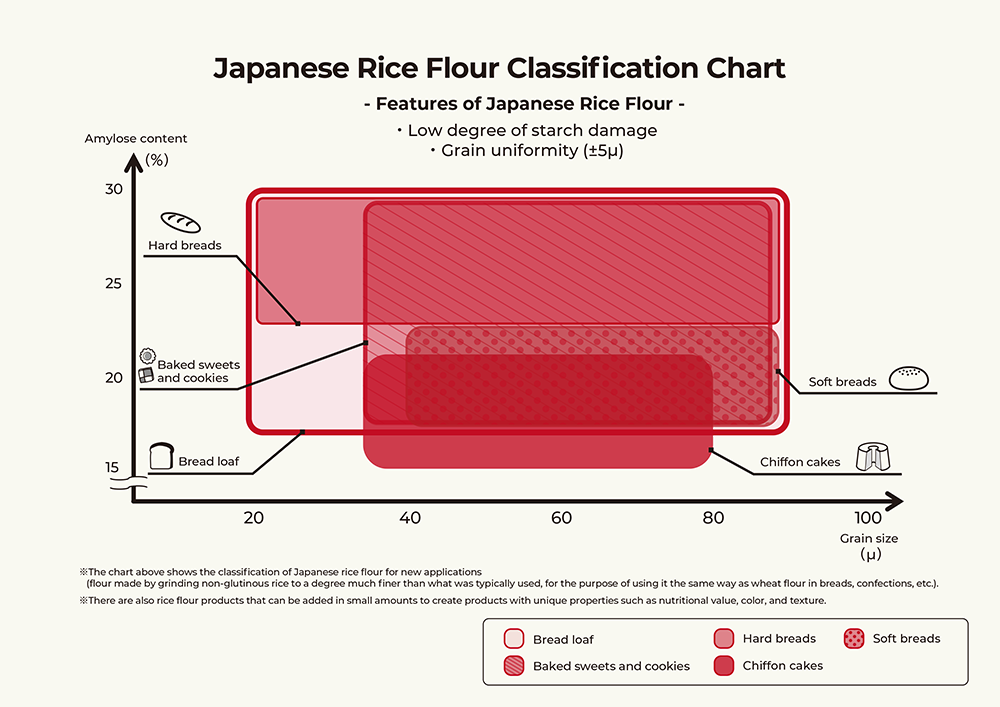

Chefs’ Voices | 02
Setsuko Otsuka
Rice flour artisan
Executive Director of Japan Rice Flour Cooking Association
Executive Director of Japan Gluten-Free Cooking Association
Tokyo, Japan
I used to believe that bread couldn’t be made using only gluten-free rice flour, since bread is a product of the wheat-based culinary traditions.
But after trying out numerous rice-flour bread recipes, I realized that rice flour creates starch networks the way that wheat flour creates gluten networks.
Great-tasting Japanese rice, grown in paddy fields with abundant fresh water, is rich in starch. Japanese sophisticated rice-processing technologies minimize the damage to the starch—meaning that the rice flour produced in Japan brings out the full potential of this amazing crop. Using Japanese rice flour means that you can bake a sweet bread using far less sugar than you would with regular wheat flour, since the sweetness of the starch isn’t lost when rice is made into flour. Even when you bake chocolate bread, you can use about half the amount of cocoa that you would use with wheat flour—since rice has an inherent ability to bring out the flavor of other ingredients. And because it’s free of gluten, you don’t have to knead it for as long.
There are all kinds of benefits to using Japanese rice flour to bake bread.

May everyone be inspired by food
Every human being knows the pleasure of natural, great-tasting food.
The gluten-free café I ran gained a high 4.5-star rating on Google. Word eventually spread to other countries, to the point that some people even visited Japan just to come there. I had always had confidence in Japanese rice flour, but my experience with the café transformed it into all-out conviction.
I did some market research on gluten-free products at supermarkets and other outlets overseas, but what’s on the shelves is currently limited to things like sliced bread, buns, and pizza crust. If we want to create a world where bakeries put out extensive arrays of gluten-free baked items and snacks, Japanese rice flour is exactly what we need.
One of the most important steps in this process will be building a community committed to popularizing Japanese rice flour around the world.
It is as if we are entering a new era of rice-based culinary culture the way Mesopotamia represented the dawn of the world’s wheat cultures. Slowly but surely, I want everyone to know about the untapped power and wonders of rice flour—a truly amazing Japanese ingredient.



